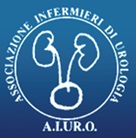
Don’t use the bladder catheterization if not expressly recommended. If necessary, follow the guidelines as far as the choice of the devices, the insertion procedure, the management, the early removal and patient education are concerned.
The practice of bladder catheterization appears to be, long since, among the most prevalent in health facilities – including private hospitals and home care – thus resulting in a procedure with a significant transversal scope.An improper indication and subsequent management of bladder catheterization can determine up to 40% of infections related to care practices, resulting in increased morbidity and costs. From this data comes the need to standardize the knowledge and skills of all workers involved in the process of bladder catheterization, especially in order to prevent the care-related infections associated with this practice.
Sources
1. Hartley S, Valley S, Kuhn L, Washer LL, Gandhi T, Meddings J, Chenoweth C, Malani AN, Saint S, Srinivasan A, Flanders SA. Inappropriate Testing for Urinary Tract Infection in Hospitalized Patients: an Opportunity for Improvement. Infect Control Hosp Epidemiol. 2013; 34(11):1204-7.
2. Meddings J, Rogers MA, Krein SL, Fakih MG, Olmsted RN, Saint S. Reducing unnecessary urinary catheter use and other strategies to prevent catheter-associated urinary tract infection: an integrative review. BMJ Qual Saf 2014; 23: 277–289.
3. Kennedy EH, Greene MT, Saint S. Estimating hospital costs of catheter-associated urinary tract infection. J Hosp Med. 2013; 8 (9): 519-22.
4. Smith MA, Dahlen NR, Bruemmer A, Davis S, Heishman C. Clinical practice guideline surgical site infection prevention. Orthop Nurs. 2013; 32(5) 242-248.
Attention. Please note that these items are provided only for information and are not intended as a substitute for consultation with a clinician. Patients with any specific questions about the items on this list or their individual situation should consult their clinician.


Recent Comments